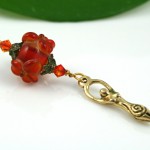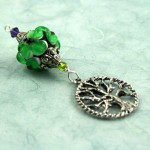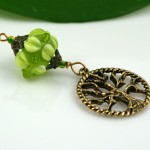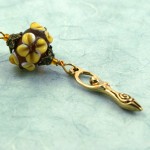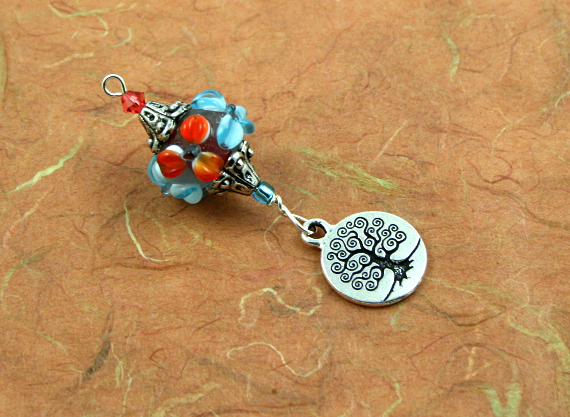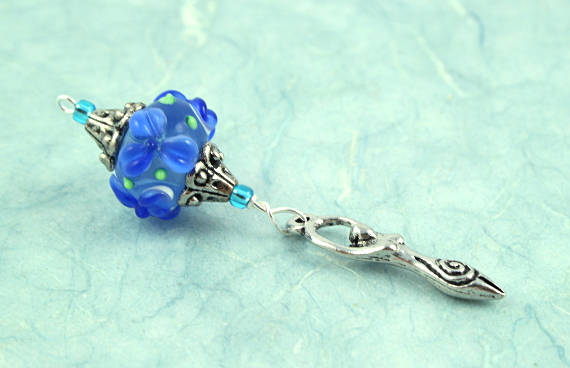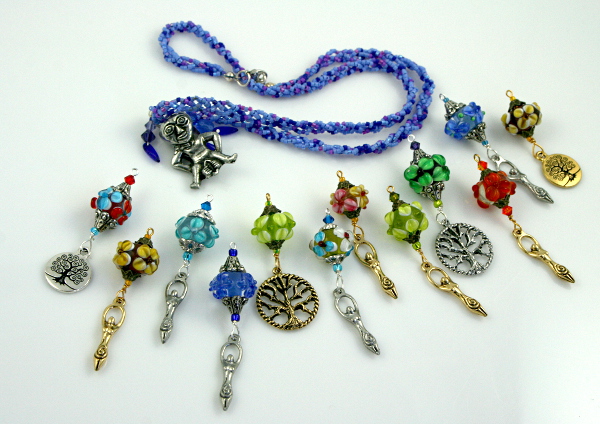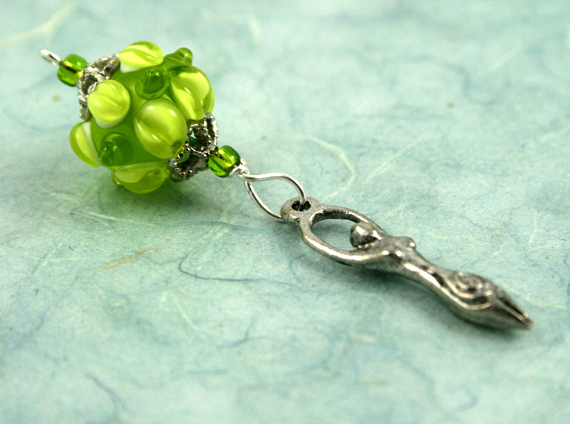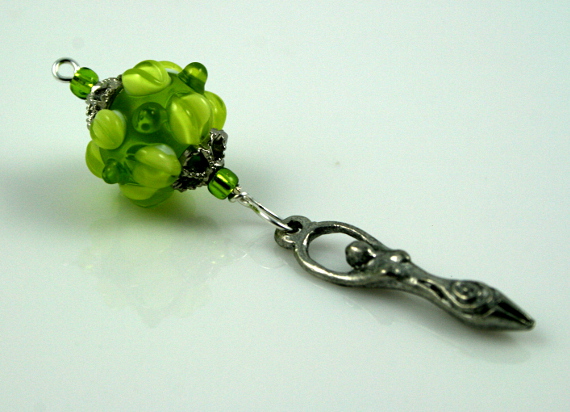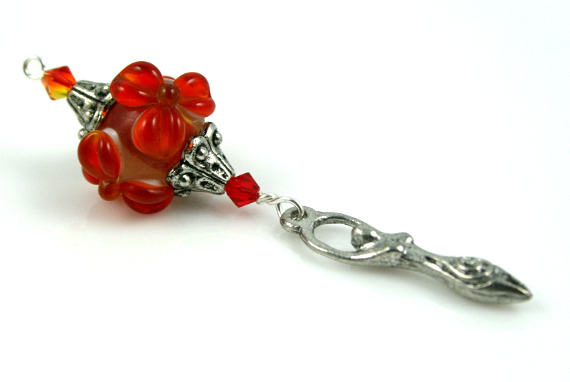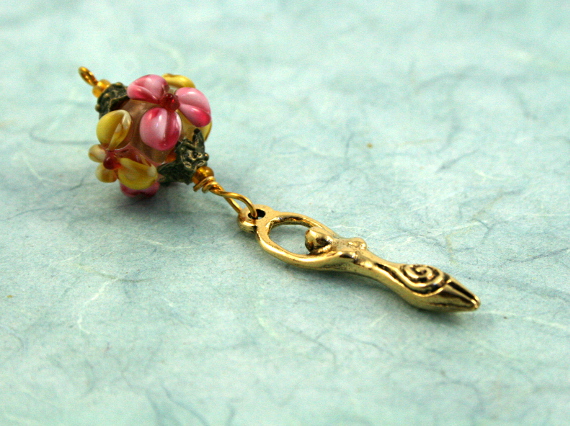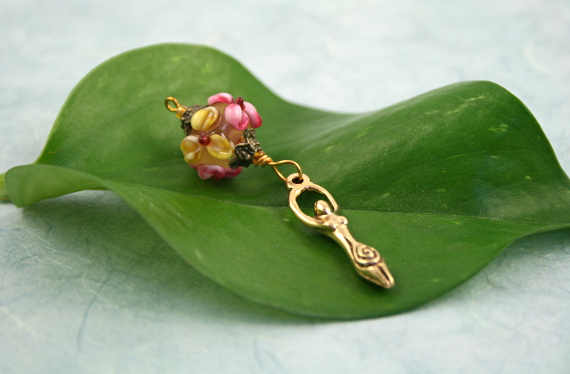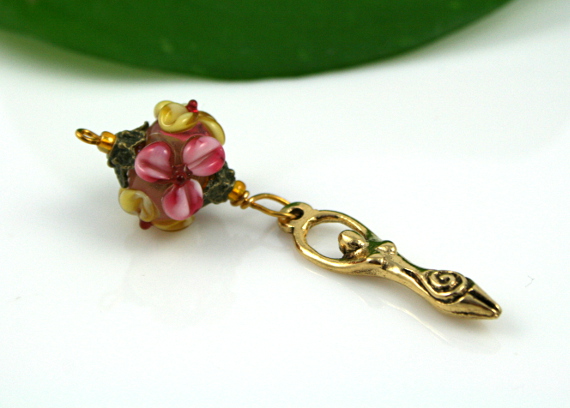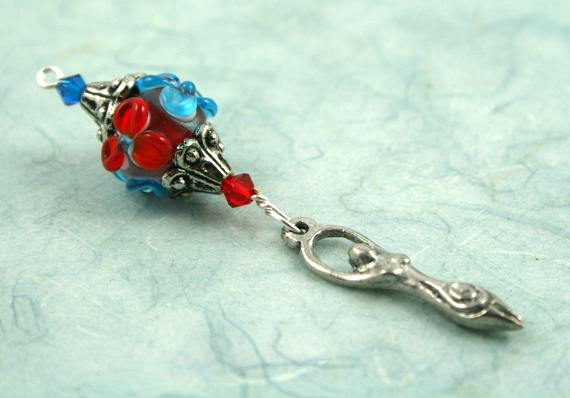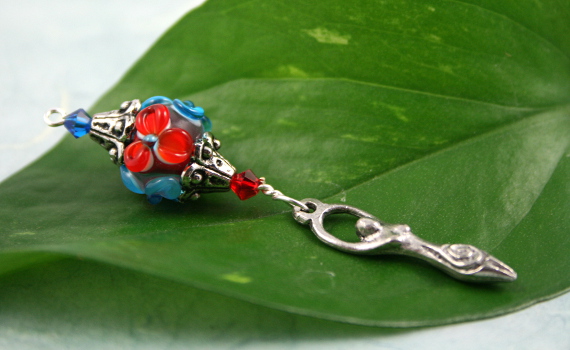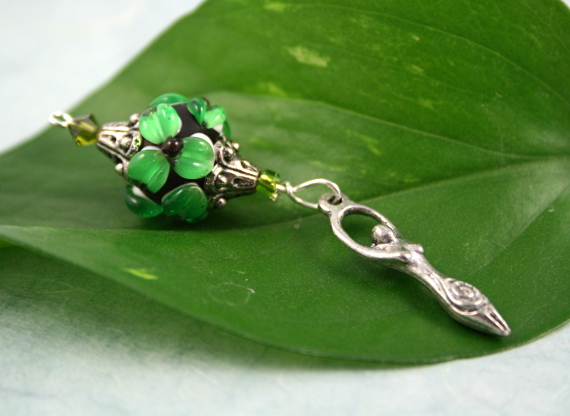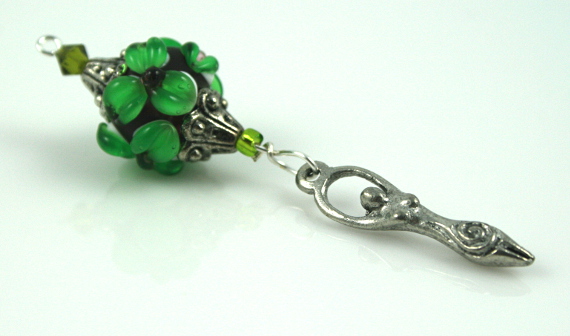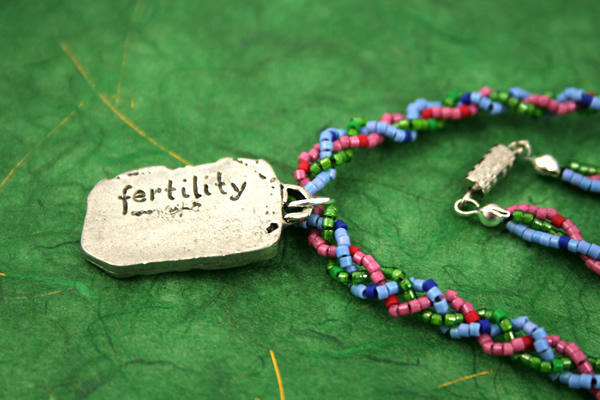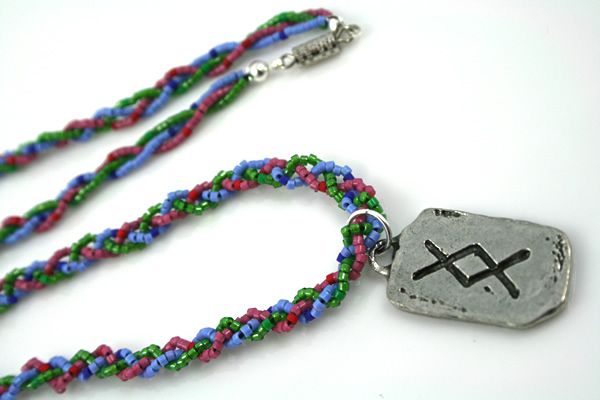On Etsy: https://www.etsy.com/ca/listing/162089384/blessingway-bead-fire-opal-goddess
Tag: pregnancy
Beading: Blessingway bead – Faery Garden Goddess
Beading: Blessingway bead – Emerald Tree of Life
Beading: Blessingway bead – Young Leaf Tree of Life
Beading: Blessingway bead – Earth Goddess
Beading: Blessingway bead – Blooms and Tree of Life
Beading: Blessingway bead – Blooming Birth Goddess
Beading: Blessingway beads
Beading: Blessingway bead – Spring Goddess
Beading: Blessingway bead – Red Flame Goddess
Beading: Blessingway bead – Faery Spring Goddess
Beading: Blessingway bead – Blooming Flower Goddess
Beading: Blessingway bead – Emerald Flower Goddess
Beading: Fertility braided necklace
Book: Rough Guide to Travel with Babies and Young Children, by Fawzia Rasheed de Francisco

Title: Rough Guide to Travel with Babies and Young Children
Author: Fawzia Rasheed de Francisco
Source: Veddma library
ISBN: 9781843537045
Available online
Notes: This is a brief guide that covers preparation for travel, making the journey, being at your destination, and has some notes on specific countries in the “Travel the world” section. The author has travelled to many places with her two sons and she shares tips on bus, airplane, train, and car travel. This includes advice on getting time off school, travelling as a single parent, staying safe, saving money, travelling pregnant, paperwork, packing, entertainment, and so on. The chapter on being there covers various health conditions and ways to deal with them while travelling. The chapter that covers different parts of the world addresses some of the most prominent traditions, dress code, and attitudes that one will encounter.
Overall, this is a lightweight book packed with useful tips. When travelling with children, it would be a good idea to consult this guide in addition to seeking a more detailed guide for the particular location if it is unfamiliar.
Ways to make pregnancy more comfortable
During pregnancy, one of the things you learn is to listen to and appreciate demands of your body. When a pregnant woman is hungry – she is starving, when she needs to sleep – she can fall into an exhausted sleep in most unlikely times and places, even if that is usually very uncharacteristic of her. Such basic urges become extreme, and if you ignore them they can wreck havoc with your body. So, try to sleep as much as your body demands and eat whenever you need to, don’t postpone your meals or rest.
Swimming or immersing yourself in water – helps against water retention, numbness, takes weight off the pelvis, can help the baby move into the head-down position, and just feels wonderful for all the lightness and buoyancy the water provides.
Walking helps with digestion and blood circulation. If your legs retain water (which occurs frequently in the third trimester) walking can help. I found walking to the beach (about 25 minutes), swimming (25 minutes to an hour), and walking back (another 25 minutes) to be a winning combination, but that was possible due to my close proximity to one of the Ottawa beaches and the later part of my pregnancy taking place during the summer. This routine can be modified to walk to a pool and back, assuming there is one near you.
Sleep – the first trimester is usually when the woman is the most tired. I used to collapse on the couch after work and sleep, although I normally can rarely nap during the day. The last trimester sometimes brings insomnia or restless sleep, due to all the discomforts of the pregnancy and worrying dreams that unfortunately replace all the sexually-charged dreams that are often present in the first and second trimesters. Babies also love to wait until you are lying down to start kicking, since you are not lulling them to sleep with motion. Sleep when you can where you can – you need all the energy to grow this new life.
Drink water – lots and lots of it. Drink before getting thirsty – thirst is a late sign of dehydration. Dehydration brings with it all kinds of nasty consequences: exhaustion, indigestion, and even contractions that can lead to premature labour. So drink lots of water.
Ginger candy – some people swear by them in that they help with morning sickness. I was not able to thoroughly test that since I managed to avoid this pregnancy bonus feature for the most part, but I found ginger candy generally helpful against nausea caused by motion sickness.
Bananas – wonderful fruit in general, containing fiber that helps with digestion and vitamin B6 that helps alleviate insomnia and fatigue. But one of the best things about bananas during pregnancy is that they also contain lots of potassium, which might help prevent leg cramps. During pregnancy leg cramps are a regular occurrence in many women, and short of “don’t cross your legs” and “don’t point your toes”, plus the usual suggestions of not sitting for a long period of time (great if you work at a desk), walking and taking a bath, no useful tips are offered to help with those. Another thing that helps with cramps is a calf stretch – sitting on the floor or lying down with your legs straight, flex your feet and push into the heels.
Update 2014: Later research shows that bananas have only half of potassium found in green vegetables (broccoli, avocados, asparagus, Brussels sprouts, and pumpkin), making the latter a better option, since bananas also have lots of sugar.
Cranberry juice – pure, 100% cranberry juice helps prevent urinary tract infections, which can spring up during pregnancy. It is hard to find pure cranberry juice in grocery stores in Ottawa – most of them sell cocktails or juice blends, both of which are full of sugar and the latter normally contains more apple juice than any other. The best pure cranberry juice I found is Just Juice – it needs to be diluted with water. It contains no added sugar and tends to be quite refreshing in summer.
Probiotics – good quality probiotics help digestion tremendously. Those sold in the drug stores, however, tend to be somewhat inferior to “professional-quality” probiotics (that include multiple species of microorganisms) which you can only get through health professionals or specialty health stores. I was recommended the Ther-Biotic Complete from Klaire Labs. Check with your health professional on their recommendation.
Papaya, pineapple, unbleached almonds, and not drinking water when eating are all good ways to help prevent heartburn. Papaya is also a good source of potassium. With the growing uterus pushing all the organs out of the way, which leaves little room for stomach, heartburn is a common issue during pregnancy. Eating smaller meals and sleeping with your head elevated also sometimes help.
The modified yoga Cat pose (the back has to be kept straight when not arched up) works wonders: it takes the weight of the uterus off the pelvis and the back. Used during pregnancy it can act as a way to relax and give yourself a chance to rest from the baby’s weight. This pose is also helpful in labour as pain relief as well as to allow the baby to shift out of the pelvis and using gravity acquire a different position that can be easier on the woman’s back.
Prenatal massage – helps with sore and tired muscles, leg cramps, back pain, and just feels wonderful. You would have to find a place that offers prenatal massage – they have special training in what is safe in pregnancy, as well as table inserts that allow you to lie on your belly during the massage. I have had several sessions throughout my pregnancy, including the one to fix my back when I managed to take a fall down the stairs in my first trimester, and I found them very helpful in alleviating various discomforts and aches.
Living in Canada, most of us don’t get enough vitamin D due to lack of sunlight. During pregnancy, the recommendation is 40 minutes of sunlight a day. A vitamin D supplement might also be helpful – consult with your health care provider.
Prenatal vitamins are highly recommended by every health practitioner and every book I have come across. In addition to taking folate (NOT folic acid) prior to pregnancy and during it to prevent neural tube defects in the developing fetus, some of the most crucial elements are included in prenatal vitamins, such as calcium (you are building the baby’s bones and if you don’t take in enough calcium it will be taken from your own bones) and iron (used in hemoglobin production and the formation of placenta). Many women exhibit iron deficiency during pregnancy, which can have serious consequences such as anemia.
Kegel exercises have been claimed to strengthen your pelvic floor muscles, which would have many beneficial effects: preparing your muscles for labour, postpartum return of pelvic tone, prevention of incontinence, and so on. Later investigation is showing that kegels are not effective for this purpose and are working the pelvic floor muscles in ways that tighten them, making them inflexible. Katy Bowman elaborates on biomechanics of the pelvic floor muscles and effective ways to work them. Deep regular squatting is a better way.
Eat lots of fruit – in addition to all the wonderful vitamins and minerals that you get from fruit, they also contain fiber which helps your digestive system.
Yogurt – helps prevent thrush (yeast infections) which sometimes spring up in pregnancy due to the sugar spike in vaginal flora. It can also be aggravated by synthetic or tight clothing, as well as by antibiotics (which you might be taking at some point during the pregnancy to treat some other condition). Wearing skirts (as opposed to pants) and cotton underwear (as opposed to nylon) help air circulation and can aid in keeping thrush under control.
Belly breathing is a technique where you breathe into your belly (not your chest) by flexing the diaphragm (not the rib cage). It helps to oxygenate and relax the body, which aids in relieving anxiety and stress.
In the last trimester some health practitioners recommend taking raspberry tea or a raspberry-leaf derived supplement (such as Rubus Idaeus) to tone the uterus and prepare it for labour. Do make sure you consult with your health practitioner before using this: some women find that their Braxton-Hicks contractions increase in frequency and intensity which might lead to preterm labour.
Witch hazel can help with perineum soreness or hemorrhoids. It can be used as part of a sitz bath (1/4 cup dissolved in warm water) or by soaking a sanitary pad. Before labour it is also recommended to soak a few maxi pads in witch hazel and freeze them, to use for postpartum perineal healing.
Calamine lotion can help with skin rashes that some women experience during pregnancy, due to uncomfortable clothing, heat, and carrying extra weight around.
Get a doula. A good doula is a source of all kinds of wonderful tips and tricks to make your pregnancy more comfortable. A doula also prepares you for labour by teaching you about pain relief techniques, labour progression, possible complications, and so on. A doula does not enforce any particular philosophy – you can have natural or medicated labour, at home or at a hospital, and the doula will be there to support you in whatever decisions you make. A labour doula is someone you get to know during your pregnancy and who would stay with you throughout your entire labour (as opposed to the doctor that would show up for 10 minutes only to deliver the baby, or a nurse that will stay only until the shift change and whose philosophy can significantly affect the progress of your labour). Postpartum doulas come to your place and can help solve breastfeeding problems, assist with baby care, and much more. To learn more about the roles and responsibilities of doulas, check out DONA International. I found my doula through Mothercraft – an organization in Ottawa that matches you with a doula and charges you on a sliding scale according to your income level, which makes it affordable for anyone, including low income families, to benefit from doula care.
Seriously look into midwifery care – it is much more personal, your appointments are longer, the care is based on informed choice (read: you have a say in what happens to you and your baby), and in Ontario you get 6 weeks of postpartum care, first week of which midwives can come to your home. Midwifery care is covered by provincial health insurance. Midwives in general have much better outcomes when it comes to labour induction and augmentation, Caesarean rates, and many other factors. Birth at home or a birth centre is ideal if you have no complications during pregnancy, but even in a hospital, midwives are a better choice for an uncomplicated delivery. If you are in Ontario and need more information on midwifery care, visit Consumers Supporting Midwifery Care.
Fun things to do in pregnancy
Below are some activities that I found to be fun throughout my pregnancy.
Belly cast – this is a fun activity that will allow you to preserve a three-dimensional representation of the body changes through which you went during pregnancy. The best time to do this is in your last month of pregnancy – the closer to the due date the better, but be careful postponing it too much as babies tend to arrive on their own schedule. The belly cast is best done by a professional using plaster-gauze strips and can then be painted and/or decorated. The process is best described on the site of Julie Keon – the Ottawa area belly cast artist. All I can add is that my session with her has been a lot of fun and I’m currently awaiting the completed cast to decorate it. Update: here is my decorated and painted belly cast.
Swimming – it is fun and it helps tremendously with water retention, leg cramps and pressure on the back. By immersing your body into the water, you allow the weight to be lifted off of your pelvis and aid the blood flow to the legs. The buoyancy of the water also allows the baby move more freely which might help them get into the good position for the birth. I was fortunate enough to have the later part of my pregnancy during the summer, so I could swim in the Ottawa river. If you are pregnant during colder months, you can use a pool. Hot tubs are not recommended as they can raise your body temperature to the level that is harmful to the baby’s development.
Belly dancing – if you can, find a prenatal belly dancing class. I was only able to find a regular belly dancing class which started before I was aware of my pregnancy. Belly dancing makes it fun to stay active during your pregnancy, and the hip moves can be used in pregnancy and labour to move the baby down.
Yoga – breathing and stretching exercises are great in pregnancy. Find a prenatal yoga class even if you have done yoga before. Certain positions are not recommended during pregnancy, whereas certain others are helpful to prepare for labour. Once you have taken one class, you can replicate the same positions at home (with care). Cat pose can be used to take pressure off the pelvis. Leg stretches can help prevent leg cramps. Breathing exercises are great for reducing stress.
Belly photo session – if you are up to it and feel sexy and powerful during your pregnancy, it is a good idea to get some photos done. First of all, it will satisfy relatives who live far away and keep demanding “the baby bump” photo updates. Secondly, it will give you an occasion, hopefully with your partner, to focus on your belly and have fun with the photo shoot. Bring a few props that have special meaning to you – a toy that you like, a wrap or two, favourite jewelry, etc. Be prepared for the photographer to have their usual bag of tricks ready consisting of “It’s a insert gender here!” tags, cubes with the word “baby” spelled out, heart made around the navel with hands, etc. And if it is not your thing (as it was not mine) be ready with a few suggestions (your own props help) and hope that the photographer is open to experimentation. The best time to have this session is during the last month of pregnancy, when your belly has done most of its growth.
Attend outdoor shows if you are pregnant during the warm weather. For instance, we have been to the Opera under the Stars concert and the Mosaika show, both of which have been fun and not terribly tiring. I would suggest staying away from the rock concerts with two opening bands in a venue that does not have a single chair. Those tend to be exhausting, and by the time the main band makes it to the stage you will want to be home.
Massage – find a good massage therapist that specializes in prenatal massage. Your tired muscles will love you. Leg cramps, back pain, and general stiffness can all be alleviated by a good massage. You can have a massage right up to the day of delivery. In fact, massage is one of the pain relieving techniques that can be used during labour as well.
Manicure/pedicure – find a good spa and treat yourself once in a while to at least a pedicure (it will be tough to reach your toes as your belly grows) with a massage. A foot bath and a massage feel heavenly when your feet are tired, numb, or swollen with carrying all the extra weight around. One thing I found helpful is to pick a spa that does not smell too strongly of nail polish (a hard thing to do) as you might be quite sensitive to the smell.
Baby shower – throw a party to celebrate your growing family. No need to make it “girls-only-milk-and-cookies-plus-silly-games” unless that’s what you are into. Invite friends, cook up a storm (or find a kind soul to help you out with the cooking), let people bring their own drinks if they wish, put together a playlist, decorate the place if you like, and enjoy.
Cook up meals to freeze, if you like cooking and have enough freezer space: you’ll be thankful postpartum for not having to cook as often, since you’ll be busy taking care of the baby and trying to get some rest. Invite a friend or two and make it into a small party where you can cook up various foods, have some of them and freeze the rest.
Get together with friends for snacks and movies – once the baby is born you will be too preoccupied and tired for a while to have people over.
Take a prenatal course or a course on child care – the tips will come in handy during your labour and postpartum.
Pregnancy and labour resources
I have read through quite a few books and articles on pregnancy, childbirth, breastfeeding, co-sleeping, babywearing, and so on. Not all of them I found helpful. Below is the list of those resources that provided me with the most useful information in the most usable form.
Books
 Ina May’s Guide to Childbirth, by Ina May Gaskin – the first part of the book is a collection of birth stories of women that have given birth on The Farm in Tennessee. The Farm is a community founded by Ina May, her husband, and several others in 1971, where one of the founding principles was giving women freedom to organize their own system of birth care. The midwives at The Farm have been consistently having lower intervention and Caesarean rates than the national average, and they have conducted single deliveries, twin deliveries, and various types of breech deliveries. The second part of the book covers the essentials of pregnancy and birth.
Ina May’s Guide to Childbirth, by Ina May Gaskin – the first part of the book is a collection of birth stories of women that have given birth on The Farm in Tennessee. The Farm is a community founded by Ina May, her husband, and several others in 1971, where one of the founding principles was giving women freedom to organize their own system of birth care. The midwives at The Farm have been consistently having lower intervention and Caesarean rates than the national average, and they have conducted single deliveries, twin deliveries, and various types of breech deliveries. The second part of the book covers the essentials of pregnancy and birth.
 Spiritual Midwifery, by Ina May Gaskin – this is an earlier book written by Ina May in 1975. It also starts with birth stories. The second part of the book covers female anatomy and physiology as it pertains to childbirth and has more in-depth notes on psychology, energy levels, birth complications, multiple deliveries, and required supplies.
Spiritual Midwifery, by Ina May Gaskin – this is an earlier book written by Ina May in 1975. It also starts with birth stories. The second part of the book covers female anatomy and physiology as it pertains to childbirth and has more in-depth notes on psychology, energy levels, birth complications, multiple deliveries, and required supplies.
 Birthing from Within, by Pam England and Rob Horowitz – this book explores attitudes towards labour, their expression in art, dealing with pain in labour, and covers tips for fathers and birth companions.
Birthing from Within, by Pam England and Rob Horowitz – this book explores attitudes towards labour, their expression in art, dealing with pain in labour, and covers tips for fathers and birth companions.
 Ina May’s Guide to Breastfeeding, by Ina May Gaskin – Ina May shares her experience on breastfeeding initiation, common issues and their correction, sleeping arrangements, breastfeeding multiples, shared nursing, and the need to recover the nursing culture in the Western society.
Ina May’s Guide to Breastfeeding, by Ina May Gaskin – Ina May shares her experience on breastfeeding initiation, common issues and their correction, sleeping arrangements, breastfeeding multiples, shared nursing, and the need to recover the nursing culture in the Western society.
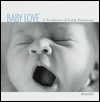 Baby Love: A Tradition of Calm Parenting, by Maud Bryt – a wonderfully calm and logical book by a Holland author, that makes common baby-caring tasks seem easy and stress-free. Here you can find tips on breastfeeding, diaper change, dressing the baby for a particular weather, introducing solids, sleeping and bathing routines, and swaddling the baby.
Baby Love: A Tradition of Calm Parenting, by Maud Bryt – a wonderfully calm and logical book by a Holland author, that makes common baby-caring tasks seem easy and stress-free. Here you can find tips on breastfeeding, diaper change, dressing the baby for a particular weather, introducing solids, sleeping and bathing routines, and swaddling the baby.
Films
 Relaxation, Rhythm, & Ritual: The 3 Rs of Childbirth, by Penny Simkin – this film consists of scenes of contractions from 10 separate women, each illustrating a way of creating their relaxation, rhythm, and ritual in labour.
Relaxation, Rhythm, & Ritual: The 3 Rs of Childbirth, by Penny Simkin – this film consists of scenes of contractions from 10 separate women, each illustrating a way of creating their relaxation, rhythm, and ritual in labour.
 The Business of Being Born, by Ricki Lake and Abby Epstein – this film takes a look at the sorry state of the obstetrical care in USA, specifically as it relates to childbirth. It covers the demonization of the midwives in the early 20th century, the move of the birth into the hospital, the big business approach to birth care, the currently-present domino effect of interventions and drugs administered at the hospitals, and the alternative – birth with the midwives, and specifically the home birth.
The Business of Being Born, by Ricki Lake and Abby Epstein – this film takes a look at the sorry state of the obstetrical care in USA, specifically as it relates to childbirth. It covers the demonization of the midwives in the early 20th century, the move of the birth into the hospital, the big business approach to birth care, the currently-present domino effect of interventions and drugs administered at the hospitals, and the alternative – birth with the midwives, and specifically the home birth.
 Comfort Measures for Childbirth, by Penny Simkin – this DVD illustrates many labour pain relief measures, as well as techniques to change a position of a baby when the progress of labour has slowed down. Each technique is explained in detail and illustrated by expectant couples. Penny Simkin also explains what happens to the pelvic bones when a particular position is used, showing how it would help the baby shift or turn.
Comfort Measures for Childbirth, by Penny Simkin – this DVD illustrates many labour pain relief measures, as well as techniques to change a position of a baby when the progress of labour has slowed down. Each technique is explained in detail and illustrated by expectant couples. Penny Simkin also explains what happens to the pelvic bones when a particular position is used, showing how it would help the baby shift or turn.
 Birth as We Know It, by Elena Tonetti-Vladimirova – the author was one of the creators of a Black Sea birth camp in Russia in 1980s, where women came a few months before pregnancy and learned relaxation techniques. The film includes footage of women giving birth in the Black Sea, as well as having water birth at home. It provides an insight into the power of the female body and conscious childbirth. In addition to the breech, twin, home birth, and water birth, the film includes a self-assisted birth by a midwife Tanya Sargunas.
Birth as We Know It, by Elena Tonetti-Vladimirova – the author was one of the creators of a Black Sea birth camp in Russia in 1980s, where women came a few months before pregnancy and learned relaxation techniques. The film includes footage of women giving birth in the Black Sea, as well as having water birth at home. It provides an insight into the power of the female body and conscious childbirth. In addition to the breech, twin, home birth, and water birth, the film includes a self-assisted birth by a midwife Tanya Sargunas.
Pregnancy nutrition tips
Below there are a few suggestions that I found particularly helpful and a few things to avoid. This is by no means an exhaustive diet plan that spells out every meal in carbohydrates, fats, and sugars – just common sense tips and favourites.
General suggestions
- Eat 5-6 smaller meals instead of 2-3 larger ones. This will help in case of morning sickness or heartburn and will aid digestion.
- Eat sufficient fiber (such as fruits and vegetables) to aid digestion. Eat prunes, figs, or dried apricots if constipation is an issue.
- Eat some pineapple, papaya, or a few unbleached almonds right after a meal to prevent heartburn.
- Drink plenty of water.
- Avoid alcohol. There is research showing that large quantities of alcohol cause premature delivery and low birth weight. There is no research that determines a “safe” dose during pregnancy. So even if having one drink once in a while is not proven to cause issues, we do not yet know when it becomes one drink too many.
- Avoid uncooked meat (such as deli meats) and undercooked meat.
- Avoid soft cheeses.
- Avoid raw/undercooked eggs.
- Avoid raw fish (unfortunately that means sushi).
- Avoid seafood that is high in mercury and PCBs. See the Toronto Public Health’s “Guide to Eating Fish for Women, Children and Families”. Take purified/distilled (free from PCBs) Omega3 supplement.
- If you are a vegetarian, make sure you are getting enough vitamin B12. See more dietary guidelines for vegetarians.
My personal favourite pregnancy foods:
- Watermelon
- Papaya
- Pineapple
- Bananas
- Plain yogurt with raisins or fresh berries
- Strawberries
- Cherries
- Mango
- Buckwheat
- Bagels
- Peaches
- Baby greens
- Spicy Thai dishes
- Sunflower seeds
- Grapes
- Fresh corn
- Various nuts
- Carrots and hummus
- Gouda cheese and crackers
- Bean borsch
- Steamed green beans
- Fresh vegetables
Pregnancy drink ideas
- Perrier
- Iced teas made at home – I steep 2 different teas with aromas that complement each other, mix them, add cold water and a few slices of lemon and cool
- Pure cranberry juice
- Fruit juices
No real substitute for alcohol
- I have not found a substitute for wine better than grape juice
- Non-alcoholic sparkling wines tend to be way too sweet for my taste, although mulled apple cider is not bad
- Non-alcoholic beer is ok if what you actually want is the bitter taste
- At parties virgin piña coladas work well: coconut cream, pineapple juice and ice mixed in desired proportions, can be garnished with maraschino cherries or pineapple slices
Natural labour tips
All the tips below are meant for a pregnancy without complications and for a natural birth (i.e., birth without drugs or interventions) that would take place either at home or at the hospital. By no means should these tips replace the advice of your midwife or doctor. These tips have been gathered from the books on labour and delivery (see Pregnancy and labour resources), as well as from the prenatal classes and the information given to me by my midwife and my doula. Use at your own risk.
Stages of labour
Early labour (may last 12 hours or more, dilation 0-3cm, contractions lasting 30-60 seconds being 5-20 minutes apart, possibly water breaking, possibly loss of the mucus plug) is best ignored. Go about your day as much as you can. Work on a labour project (do something that keeps you moving, in touch with your everyday life and mentally engaged: bake a cake, write letters or postcards, wash/fold clothes, clean, etc.) If the labour starts in the evening, it is best to halt it. Getting into a warm bath (if your water have not broken) and having a glass of wine can help stop contractions. This might give you a chance to sleep and gather up the strength for the inevitable resumption of labour that is to follow. It also gives your birthing group a chance to rest up before the labour marathon. Many hospitals will send you home if you arrive there in early labour.
Active labour (may last 6 hours or more, dilation 3-7cm, stronger contractions lasting 45-60 seconds being 2-5 minutes apart, possible increase in bloody show, possible increase in pressure in the back) is when it starts to get real. Various pain relief measures can be used: massage, putting pressure on the tail bone in case of back labour, using the physio ball to lean on, slow-dancing or hanging from a partner, finding a rhythm that works for the woman. The warm bath or shower is better not to be used before the dilation reaches 6cm. Many women are ready for an epidural at this point, and water might help them get over the need for it and allow to continue drug-free. It is said that it is about as hard to get to 6cm dilation as it is to get to 10cm, so once the woman gets to 6cm it will not get progressively more painful, but will stay approximately at the same level.
Transition phase (may last from a few minutes to a few hours, dilation 7-10cm, much stronger contractions lasting 60-90 seconds being 2-3 minutes apart, possible increase in bloody show, possible strong pressure on back and rectum, possible vomiting, possible urge to bear down) is the intense part of labour before delivery. Very intense contractions, keeping a rhythm it seems is the only help here.
Pushing stage (may last a few minutes to more than 1 hour, dilation 10cm, slightly less painful contractions lasting 45-90 seconds being 3-5 minutes apart) might bring with it an overwhelming urge to push. This is when the baby’s head is crowning and the baby is eventually born.
Tips for active labour, transition, and pushing stages:
- Labour in private or be comfortable with those in attendance. Women have been known to not only stop dilating and completely halting labour, but also reversing the dilation, if they feel uncomfortable with the atmosphere in the room. This stems from the adrenaline-producing response to a frightening stimulus in nature, where a female of the species must flee or fight before the labour can continue.
- Laugh and relax your facial muscles, mouth, and jaw. If your jaw muscles are tight, chances are your cervix is not opening up either.
- Use nipple stimulation to produce oxytocin – the hormone that helps the uterus contract.
- Try hydrotherapy: take a warm bath (unless your water broke) or shower, preferably after dilating to 6 centimetres.
- Walk, dance, change positions – move around during labour: the movements help your baby move down. Move your hips, it helps the labour progress.
- Concentrate on an opening mantra (you can make one up) or a piece of birth art – it will help you open up.
- Relax pelvic muscles – the baby is coming out one way or another. Relax your bottom to help the process along.
- Breathe slowly and deeply – this is the basis of many yoga teachings: deep breathing helps relax the muscles.
- Speak loving words – Ina May categorically states that she has never seen anyone’s cervix remain tight when they spoke words of love to those around them.
- Use the “horse lips” technique – relax your lips, blow a good amount of air through them while flapping them like a horse would. This relaxes the throat and jaw muscles and with them the cervix and the perineum. If it makes you laugh – so much the better, since laughing aids in muscle relaxation.
- Sit on a toilet, a birth stool, edge of a bed, squat. Move in ways that feel natural to you – the hip movements help the baby move down.
- Let gravity do the work – use upright positions. The “classical” Western childbirth position with a woman on her back with her legs up is possibly the most illogical one: not only does the pelvis get narrower in this position, but the baby has to be moving horizontally and then upwards. The only reason for this position is to allow doctors easier access to the patient, not to make birth easier for the woman.
- Drink a lot to stay hydrated (take a sip after every contraction – make your partner bring the straw to your lips), urinate every hour (this will ensure that at least once an hour your pelvic muscles relax which will help the progress of labour).
- Explore touch and massage: pressure on the tail bone or on the lower back, hand and foot massage, thigh and leg massage.
- Invoke goose bumps on the mother – this manoeuvre causes a release of endorphins.
- Explore being shaken by others to speed up a prolonged labour – this can be the rhythmic shaking of the woman’s thighs or a Chinese approach called chung when two or three people vigorously shake the mother all over.
- Pant when pushing to reduce probability of tears, push only when you have an urge to push.
- Stimulate clitoris as baby emerges – this increases vaginal engorgement and might help prevent lacerations.
- Make low register noises, such as moans, – the vibration will be reflected in the lower part of your body.
- Use the relaxation, rhythm, and ritual technique described by Penny Simkin: she found that women that cope well in labour exhibit the same three basic traits: they are able to relax between or during contractions, they use rhythm to get through the contractions, and they create their own ritual by following the rhythm they have chosen.
And remember, labour is hard, it is painful, and you can do it.








